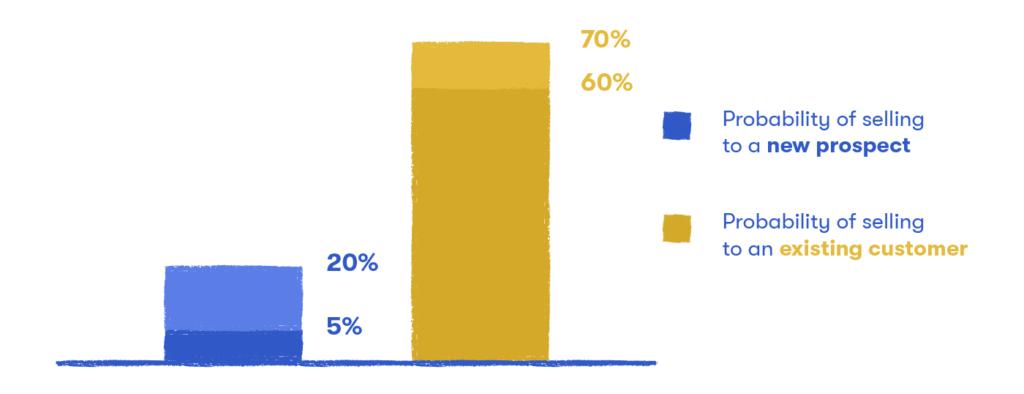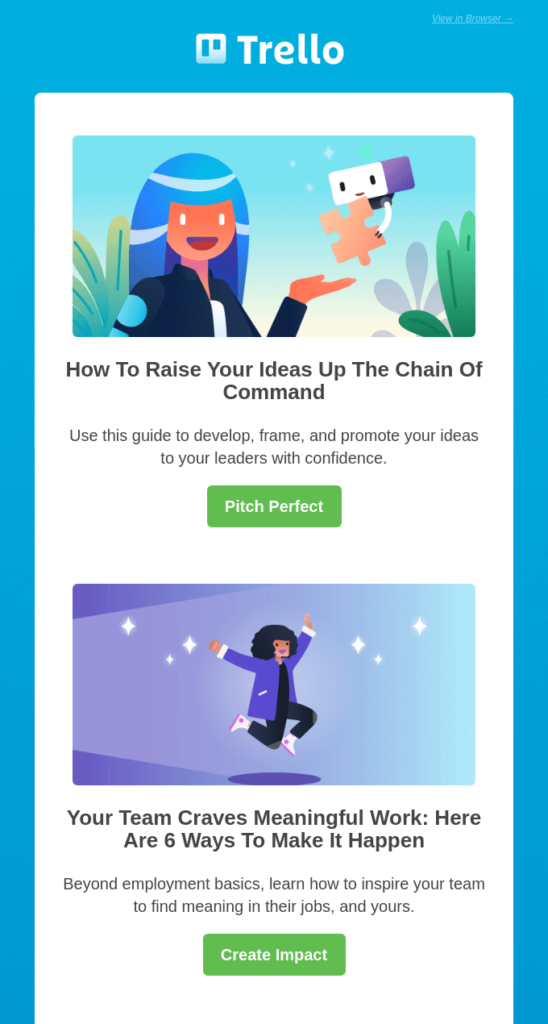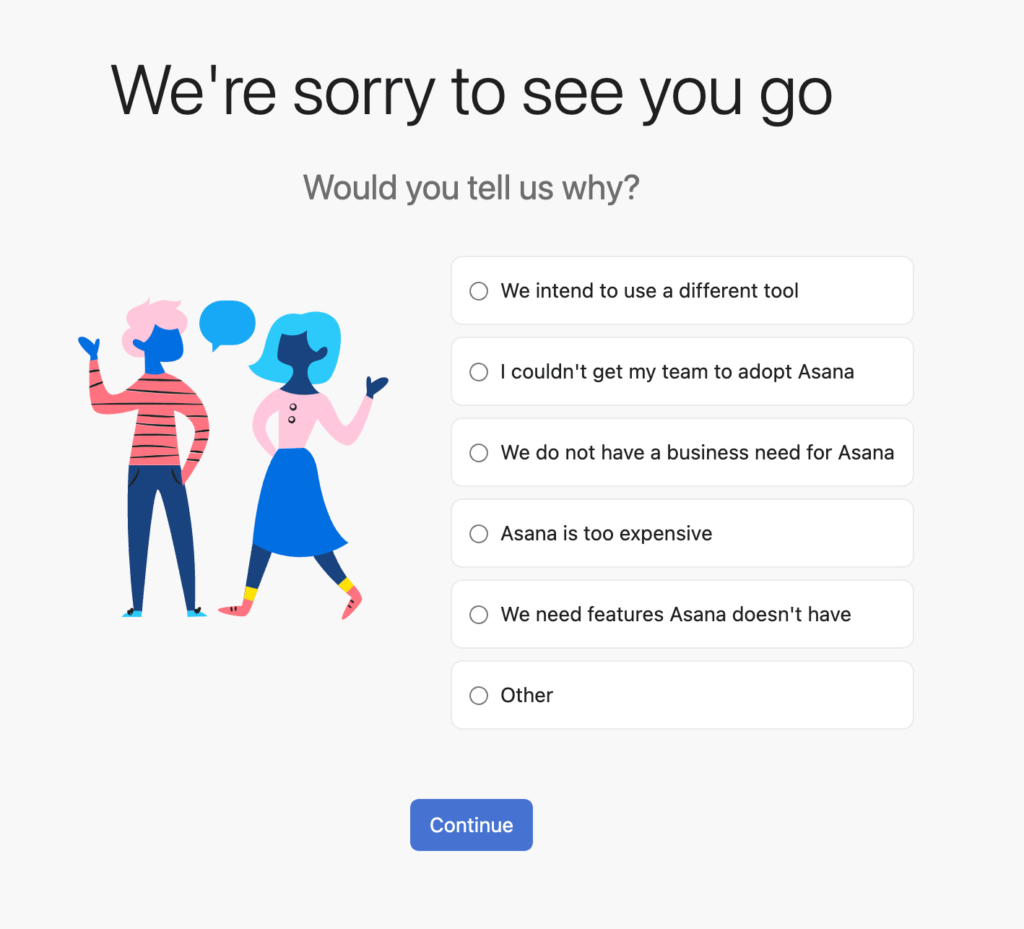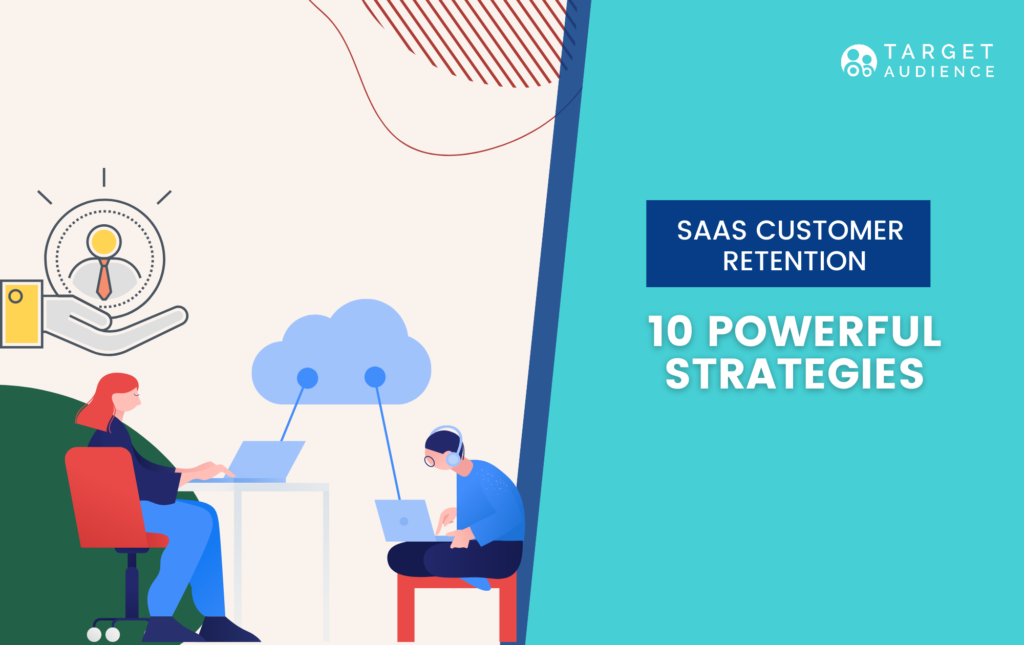Let’s admit it – customer churn is the Achilles heel of the SaaS industry. This makes customer retention for SaaS businesses all the more important. Retaining an existing customer is much easier and more cost-effective than acquiring a new one. That means that investing in customer retention (and monitoring retention metrics properly) should be a top priority for SaaS companies.
In fact, failing to balance your retention rate can result in a loss even as you acquire new customers. The SaaS model is built in a way where profitability is produced over time. If your users churn before completing enough payment cycles to cover the acquisition costs, all your growth efforts will be in vain.

Additionally, your current customers are your most valuable users. The longer a user keeps using and benefiting from your product, the more opportunities you will have to upsell and increase their lifetime value. Eventually, long-time satisfied customers can even become promoters of your product and refer their friends and colleagues.
So what are the most effective customer retention strategies for SaaS?
1. Highlight your Unique Value Proposition
Your unique value proposition (UVP) is what makes your product, well, unique. It’s that ‘thing’ that makes it so valuable for your users, and that sets it apart from other similar products. In short, your UVP is the reason your users signed up in the first place. And if they are still around, it most likely means that your offer provides them value.
It’s a good customer retention strategy to remind users of the UVP from time to time, through email marketing and other forms of content. A good value proposition is simple, tells the customer exactly what is the end result they should expect, and can be read and understood in a few seconds. Avoid hype words or professional jargon – keep it clear and direct.
2. Analyze your onboarding process
The onboarding process is essentially the first impression the customer gets from your product. Examine your onboarding – is it informational without being cumbersome? Is it engaging? Do you highlight the most important features of your product? Does the flow keep users motivated to keep going?
The traits that capture users in the first place will usually keep them happy in the long term too. Additionally, you can use the onboarding process to gather data about the behavior of new users and utilize it to better understand their needs and pain points.
3. Upsell or cross-sell
Upselling in SaaS means engaging an existing customer at a deeper level by offering him extra services and features. A long-term customer already sees the value of your product. Upselling is a win-win – the user gets better services and you increase your revenue.
Upselling achieves three major accomplishments:
- You are now tackling several pain points for the customer, therefore the relationship deepens
- The customer lifetime value (CVL) increases
- Higher billing amounts increase the user’s commitment, making them more likely to stick around longer
4. Send targeted tips
To keep your users engaged and motivate them to explore further, you can deploy customer retention email campaigns. Whenever a customer completes an action they should get an email guiding or encouraging them to explore further. For example, a customer just created their first invoice on your bookkeeping software. Send out an email saying “Congratulations! That was easy wasn’t it? Here are a few tips and tricks on creating invoice templates,” and direct them to a blog post or video on the topic. This customer retention strategy is also sometimes referred to as secondary onboarding.
Help like this adds value to the customer’s efforts and is likely to make them stick around longer.

5. Maintain a regular interaction schedule
Imagine subscribing to a service and only hearing from them about billing issues or when you contact customer service. Not very pleasant right? This is not the connotation you want your customers to have with your company.
Developing a regular interaction schedule is crucial for SaaS customer retention. Use these interactions to delight your customers and remind them about the value they receive for your product. Of course, the volume of your interaction schedule should be sensible and realistic to the size and nature of your business.
Even if you don’t send content-heavy emails frequently, contact your customers every once in a while to say hi and see how they’re doing with your product. It shows that you care about them and their experience beyond the money. Creating a partner approach, where customers feel they can reach out to you and you’ll listen, will ensure you lose fewer clients.
6. Over-the-top customer service
This one is as relevant for SaaS as any other type of business – customer service can make or break an organization. Customer success and customer support are both critical for SaaS retention, and they should work together to create an excellent customer experience.
67% of users cited bad customer service experience as the primary reason for churn. It all boils down to your attitude when resolving customer issues and how the customer feels after the interaction. When solving those issues – always go overboard with your efforts. Don’t only remove the specific obstacle the customer called about, but give them something extra for their trouble. Users will put up with bugs and technical issues as long as you can resolve them, but a bad customer experience will put most of them off and put you at risk of losing them.

7. Know when to ask for feedback
Inviting feedback is a significant part of a good retention strategy. However, timing is crucial. It can be tempting to request customers to complete a survey right after they’ve gotten help from customer support. After all, the experience is still fresh in their minds. But asking for feedback at this moment might annoy the user in unwanted ways.
Look at it this way: they’ve just faced an issue. Hopefully, the resolution process was smooth. They want to progress with their work, but the team keeps pestering them to complete a survey on their experience. You’d be annoyed too, right?
So when and where should you ask for feedback? Try to do it in places where you need the user to feel a sense of control. You could try placing a link on your pricing page, or when you send out your monthly newsletter. Make sure the CTA is clear and visually appealing and inviting for users to click on it.
8. Measure engagement
Collecting user feedback can also be done without sending out any annoying surveys. With the right technology, you can gather a lot of insight into their preferences by tracking engagement with your product and website.
After all the more a user actually uses your SaaS, the more they will realize its value and understand how indispensable it is. Make sure you define clear user engagement KPIs from the start. If you notice a user is exhibiting churn-like behaviors, you can intervene at the right time with the right message. The more closely you monitor this data, the better your retention strategy will get.
9. Consider a reward program
When users do stay with you for a long time, why not let them know that you appreciate it? If done right, loyalty programs will benefit both the user and the company. In fact, 77% of customers are more likely to continue doing business with you if you reward them, according to Breadcrumbs.
A reward program doesn’t need to be complicated or costly to be effective. Simple rewards like an occasional discount, upgrade, or freebie (like a free month of subscription, for example) have proven to be effective in encouraging further loyalty from SaaS customers.
Nick Charnet, CEO of Data for SEO said that in his view “Clients value the act of giving—more than discounts or rewards. They enjoy feeling appreciated, and that’s what keeps them remaining our clients.”
10. Make leaving easy and utilize exit surveys
If a user decided to leave, despite your retention efforts, never make it hard for them to do so. Make your cancellation policy as simple as possible to avoid grumpy reviews on social media.
No one likes to lose customers, but you can turn the exit process into a retention opportunity. A goodbye email and an exit survey must be included in your customer retention email campaign. Just like you must emphasize the value of your product when users sign-up, you should remind them of it when they leave. Point out what they will lose – not just the saved data but their investment in the product to this point and all the ease it brought into their lives. Make departing users have to reconsider their decision. But also have a big cancel button that will allow them to leave easily if they want to.
And if they did decide to leave – ask them why! People mostly leave for a reason, and exit surveys can give you super valuable insight into what you’re doing wrong, and how you can increase retention in the future.

Final Thoughts
Customer retention is an extremely important aspect of the SaaS industry. The churn rate is challenging but you can definitely do something about it.
At the end of the day, SaaS retention is all about respecting the time and effort of the users, delivering on your promises, and making the experience you offer truly worthwhile. People will be happy to pay to get their problems solved by someone who understands them and listens to them.



